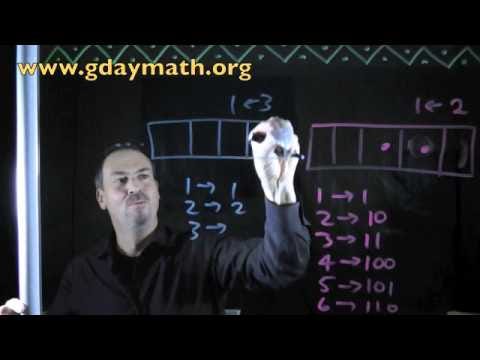How to awaken a generation of lost mathematicians
Introducing Exploding Dots
When I hear friends, family and strangers say they can’t do maths, I despair. How can they so coldly reject the talents they were born with? Then again, I have always felt the same way about art. I could never draw, never paint, never produce anything of visual significance. And I was convinced nothing would turn that around.
That made me a hypocrite. On the one hand, I was an evangelist of the growth mindset, the belief that our abilities are not fixed. I have joined Carol Dweck and others in spreading the good word that intelligence is fluid, that our talents can be nurtured through deliberate practice. And yet I was nothing more than a selective champion of these beliefs, because I just as readily cast them to one side when it came to my own feared subject.
Nobody likes to face up to their double standards; I’m no exception. But a TED talk by Graham Shaw forced me to confront my contradictions. He boldly claims that in 15 minutes he can get even a hopeless drawer like myself producing decent looking cartoon characters. I only had to put pencil to paper, with nothing to lose beyond the 15 minutes of what I’m sure would be an intriguing talk anyway.
Graham Shaw was not half wrong. Here is the fruit of my labour:

I am surely no Michelangelo. But this was far beyond anything I’d assumed I was capable of (the one on the left is Einstein, by the way). In those 15 minutes, I was persuaded, for the first time ever, that maybe I do have an innate talent for drawing. Maybe it just needs to be nurtured, with carefully guided instruction, and the freedom to just have a go. Certainly without fear of being labelled a failure. Graham Shaw’s video was nothing short of epiphanic, awakening talents that for too long lay dormant.
We need to do the same for mathematics — but how? The Hour of Codeproject offers some clues. Launched in 2013 by Code.org, it aims to expose school students to basic principles of computing through introductory tutorials that last, well, an hour or so. The Hour of Code has morphed into an international event, securing the backing of major tech firms. Presidents Obama and Trudeau have thrown in their support for good measure.
According to Code.org’s internal impact report, the Hour of Code has increased engagement with both the learning and teaching of computing. It also confirms that the ‘hour’ is merely a hook, with 87% of organisers saying that their students coded beyond the allotted time.
Mathematics is crying out for an equivalent — a brief lesson that captures the imagination of students. There is, however, one crucial difference. Whereas computing is unfamiliar to most students, school maths is all too familiar. Students bring no fear or prejudice to their study of computing, but their worldview of maths has already been coloured by their schooling experiences. They learn computing with a blank slate, but with mathematics the slate needs to be wiped clean.
Whatever the maths equivalent for Hour of Code is, it must recondition students towards a new way of understanding mathematics. It must reveal a side of maths that has been hidden from view in the formalities of curriculum and assessment. It must show them that maths is beautiful, perplexing and logical all at once.
When I asked writer and all-round maths champion Sunil Singh what such an experience might look like, he gave me two words: Exploding Dots.
Exploding Dots is a simple yet extraordinarily flexible construct for broaching a range of problems in arithmetic and algebra. James Tanton (another maths champion, maybe the Ultimate champ) has developed a series of videos in which he simply and elegantly covers a range of school maths topics within the framework of his Exploding Dots ‘machine’. It can only sound abstract in writing so watch his videos and judge for yourself — you’ll be carrying out polynomial division before long, in a manner you never thought could be so visual and intuitive.

2017 is the year of Exploding Dots. It has been selected as the headline topic for the inaugural Global Math Week, the long awaited maths equivalent to Hour of Code. Global Math Week may even be superior, because it represents the world’s most co-ordinated turnaround effort in mathematics. It aims to inspire over a million students with a renewed vision of maths, all with the simple aid of Exploding Dots.
Exploding Dots can do for self-declared maths rejects what Graham Shaw’s TED talk did for me. Give it a chance and it will plant a seed of tangible hope that you can do maths, after all. It will delight even the most seasoned mathematicians among you.
It will remind all of us that mathematicians, like artists and programmers, are not just born: they are also made and remade.
You need to be a member of School Leadership 2.0 to add comments!
Join School Leadership 2.0